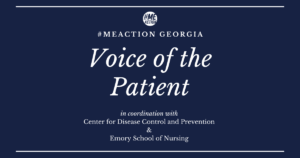The real face of CSS (Central Sensitivity Syndrome)
From Maria Goretti, la verdadera cara del SSC (Síndrome de Sensibilización Central)
Translation by @pearaphrase and @CleoLagos
Today’s blog entry is going to be quite long, but I hope my rambling will make some sense.
These days, we are closer and closer to getting certain illnesses taken seriously but hey, people, take your time, no need to rush, even if our daily experience seems to say the contrary. Anyway, as Mulder would say, ‘I want to believe’.
Fibromyalgia (FM), Chronic Fatigue Syndrome (CFS) and Multiple Chemical Sensitivity (MCS) have a lot of general, chronic symptoms in common, and all three illnesses may be present, each in a different degree, in the same person. That is why it is so important for medical professionals to be able to tell them apart and give a correct diagnosis, so that the patient can learn how to manage the extensive symptoms they entail in the best possible way.
But why do so many things seem to ‘bother’ us so much? And I’m using inverted commas here because I think this is a massive understatement – I would say that those things can crush, grind, pulverize us. Because it is just like inside the Big Brother house: everything is magnified.
In Central Sensitivity Syndrome (CSS), the neurons in the central nervous system become overexcited when exposed to different stimuli – hence the exaggerated reaction to pain, touch, noise, light, foods and smells, changes in weather, stress, chemical products, medication, etc. Central sensitization, on one hand, and a failure in the descending inhibitory pathways on the other, would cause a progressive increase (wind-up phenomenon) and a temporary magnification of the response.
This results in a decreased response threshold to different stimuli, and therefore increased sensitization, causing the wind-up phenomenon and persistent pain, even if the stimulus is removed.
I am going to give you a very clear example. If my side itches and I scratch, the itch will go away, but an intense and increasing pain will suddenly appear in the area, as if I had been hit, even if I have already removed my fingers (I always regret scratching certain parts of my body, eventually).
This continuous sensitization (because your body is permanently alert) causes changes in our brain’s plasticity, in its lifelong capacity to create new synaptic connections based on new information, sensory stimulation or brain damage. This is why more and more studies are now reporting brain changes, differences between healthy people and patients, when we had always been told that there was no physical evidence of these illnesses (which was one of the reasons why doctors would not believe they actually existed).
And why am I telling you all this?
Because just a day before the international FM, CFS and MCS awareness day, María Goretti Guisande Ferro, a clear example of CSS since she has all three illnesses, was evicted from her home.
This is a tragedy that affects (mainly) young women who have no other option but to withdraw from working life, with no disability benefits or allowances. Some of them are ‘lucky’ enough to have a partner, a family or friends who can provide financial support. Others are left to their own fate, with local social services intervening to a lesser or larger extent.
In this particular case, social services have indeed intervened. However, arrangements made by other people are not always suitable to us, particularly because only we know what affects us, to what extent and how to manage it in the best possible way. You can read María Goretti’s story, and many other women’s, in the articles I link to at the end of this entry.
María Goretti, 38, was a fashion model. She had to stop working and she was living in a rented home, but she had to stop paying rent because she had no income. Her family lives very far away from her and she has been granted a room in a care home, where the common areas make her MCS much more difficult to control than if she lived on her own.
As I have already mentioned on Twitter a few times, Spain’s social security system has shown, time and time again, a total lack of respect for people affected by Fibromyalgia, Chronic Fatigue Syndrome and Multiple Chemical Sensitivity. Sufferers are systematically refused any degree of disability when applying for it through administrative channels, and their only alternative is to take the matter to court. This is physically-, emotionally- and financially-consuming for these people, particularly if we take into account that they are seriously ill and have little or no income because they have been forced to work part-time or to stop working altogether.
And as if that was not enough, they came up with a new dirty trick: they are withdrawing permanent disability degrees and allowances granted at court, which shows just how absolutely clueless they are about these illnesses. Or maybe it just shows how cynical they are, because judging a CFS patient’s disability degree by making them walk around the surgery room does not reflect the real problems and challenges that we face every day.
The point is, no matter how much you read about CFS, there are some images that can tell you the whole story. I have just compared María Goretti’s pictures with the usual portrayal of FM, CFS and MCS on the Internet.
It didn’t take me too much effort. There are several issues that become clearly evident with just a glance.
Most of the images you will find online are pictures, posed by models, of women in their 30s (and logic ends here). If you are an FM sufferer, apparently you wear white and you spend your time holding your head in your hands or rubbing your temples, your low back, your shoulder or your neck. You can also throw in a bit of dramatic writhing. Besides fibromyalgia, some of these pictures could just as well be used to illustrate headaches or depression.
If you are a CFS sufferer, you have two options: you can fall sleep on a book, on your office keyboard, on one of the machines at the gym or while doing your household chores; OR you can sleep while looking as gorgeous as a soap opera actress (in a white bed as well, mind you!). Interestingly enough, CFS-related pictures feature male sufferers more often than FM- or MCS-related pictures.
When it comes to MCS, I have found pictures of real sufferers, and also pictures trying to ‘portray’ MCS. In the latter, apparently they are clearly aware that MCS sufferers wear breathing masks, although not which kind of mask (who cares if an article about MCS features a picture about hayfever? OMG). And the main problem for sufferers seems to be cleaning their homes. Yeah, let’s just ignore the social isolation caused by the use of soaps, deodorants and perfumes on the part of the people you have to socialize with. Just to give an example.
Let’s do a reflection exercise, please. Or even better, let the people who choose those magazine pictures do a reflection exercise. I understand that portraying certain realities is complicated, but let them spot the difference between María Goretti’s pictures and those found on a quick Google search for FM, CFS and MCS.
Does anyone still wonder why CSS is made light of in today’s society?
[button_color url=”http://meaction.net/2015/04/12/retire-this-stock-photo/” content=”Retire inaccurate ME/CFS stock photos!” target=””]
Photo of María Goretti by Xavi Herrero.
Read More (in Spanish)





